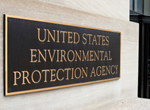
Did you know there are strategies that can help you improve relations and have a positive effect on inspections and compliance? These tried-and-true approaches can be used to good effect in dealing with enforcement agencies like EPA, OSHA, DOT, and state environmental agencies.
- Find out who the real decision makers are. Learn about agency organization and “who’s who.” Learn about headquarters and regional office authorities. Identify the roles of division chiefs and directors or the specific bureau’s driving agency policy.
- Gather information about which forms are needed for applications, plans, reports, and other documents that must be filed with the agency. Gain access to applicable laws and regulations. Also, develop an effective recordkeeping system.
- Become familiar with the substantive and procedural requirements of the agency. These include notice requirements, timing for filing documents, deadlines for appeals, performance standards, design specifications, and qualifications of those filing information with the agency.
- Make informal contact with low-level agency officials to get tentative reactions to any proposals and submittals. Inquire about the basics. Ask questions. Demonstrate willingness to comply.
Prepare your facility to deal with conducting self-inspections, preparing and handling visits from agency inspectors, responding to violation notices, and more with Inspection Requirements for EHS Managers. Get the new report.
- Plan ahead for agency meetings. Avoid pointless, premature meetings with high-level agency officials who usually rely on staff reviews anyway.
- Solicit agency ideas and incorporate them into projects. Let the agency have a role in shaping any proposal before it’s a done deal. Again, demonstrate your willingness to comply.
- Work up the agency ladder so that a “yes” is final at any level, but a “no” can go higher. Never accept a “no” answer.
- Document meetings and telephone contacts. Keep track of your commitments and meet them. Get agency promises in writing. Answer questions fully and frankly, but do not acquiesce to unending requests for more information. Identify what they want and why. Also, make it clear when you have provided the agency with what is legally required and what is reasonable. Be sure to have an effective recordkeeping system.
- Lobby around the agency’s back only rarely, but use political clout when necessary. More often than not, political clout is most useful by “holding back,” used only when necessary.
- The same is true with litigation. You will often accomplish what you want by showing that you are well organized, that you have clear objectives, that you have secured professional help, and that you are ready, willing, and able to do what is necessary to obtain your objectives and protect your rights.
- Finally, don’t forget that maintaining a good, cordial working relationship is important should future contact be necessary.
Properly preparing for a regulatory agency visit and conducting self-inspections are crucial to avoiding enforcement actions. Get ready with the all new report, Inspection Requirements for EHS Managers. Get it now.
Talk to your workers. Lead a discussion about dealing effectively with government agencies such as EPA, your state’s environmental agency, OSHA, and whoever else that may come knocking.
Inspection Requirements for EHS Managers, is divided into tables for easy use. You have everything you’ll need in just 4 tables:
Table 1 provides a listing of self-inspection requirements under federal environmental laws.
Table 2 provides requirements under federal safety laws.
Table 3 provides requirements that apply to hazardous materials motor carriers.
Table 4 is a listing of major environmental and safety acts that have requirements for right of entry, inspections, sampling, and testing. Be advised that your state may have different and additional inspection requirements.
Inspection Requirements for EHS Managers also contains checklists to help with preparing for an agency inspection, participating in an inspector visit, and responding to violation notices and enforcement orders.
